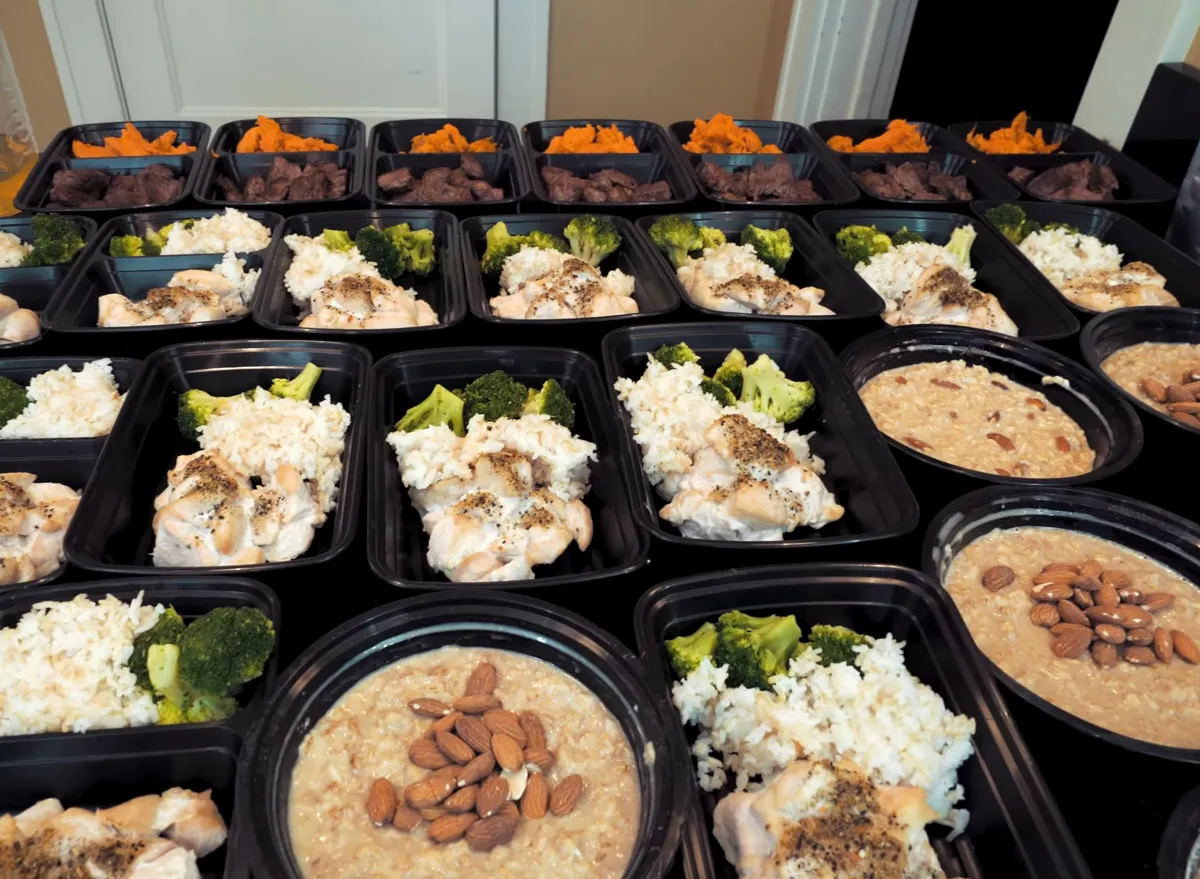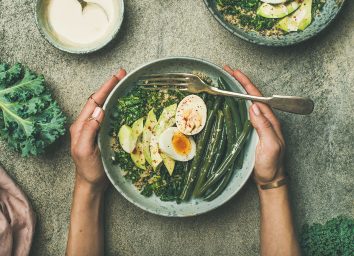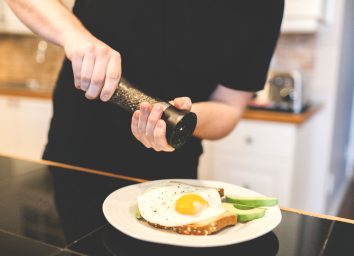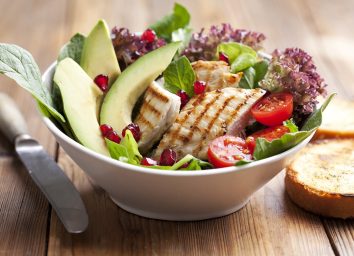Everything You Need to Know About the Bro Diet
I was taking a lunch break at work, flipping through Instagram stories and chomping on my celery sticks, like any normal day. As I tapped, I came across someone posting an image of their lunch. It was a pretty basic plate of rice, vegetables, and protein. But above it, the Instagram user wrote “my bro diet plate” in bright colorful letters. I sat there frozen, my finger pressed to the screen, wondering what a “bro diet” was and how I had never heard of it before. I mean, I work for a health food publication for crying out loud. Shouldn’t I already know all the fad diet trends?
I went back to my work computer and did a little research. To my utter amazement, the “bro diet” is a well-known dieting practice, one that is talked about across the Internet. It’s a restrictive, macro-based diet that usually involves an absurd amount of chicken and rice.
After reading up on the type of eating this “bro diet” entails, I contacted one “bro” I know for certain who eats the way this diet describes: My brother.
The logistics of the bro diet
Even though there aren’t a lot of credible nutrition sources or guidelines for the bro diet, my brother instantly knew what I was referring to. Brendan Sinko, a former college athlete, has always been hyper-focused on his nutrition. He spent his high school and beginning of college years honing in on eating the right foods to shape him as an optimal lacrosse player at Clarkson University, but didn’t exactly approach a bro diet until the end of his sophomore year. It was his way of staying on track with his macros while working an internship that summer.
Here’s the kicker about this particular diet—there’s no set way to go about it. Most people that claim to be eating the bro diet do most of the research themselves and figure out some type of “plan” based on their macro count (which is typically determined using online macro calculators). Bro diet fans usually choose clean, whole foods to fulfill those macros, and tend to not worry about how bland it is. Some typical foods prepped for a bro diet includes lean protein sources (chicken, fish, lean ground turkey, eggs, sometimes steak) and healthy carbs or whole grains (brown rice, sweet potato, whole-wheat pasta, oats). Broccoli is the most commonly used vegetable, but green beans and asparagus are common choices as well.
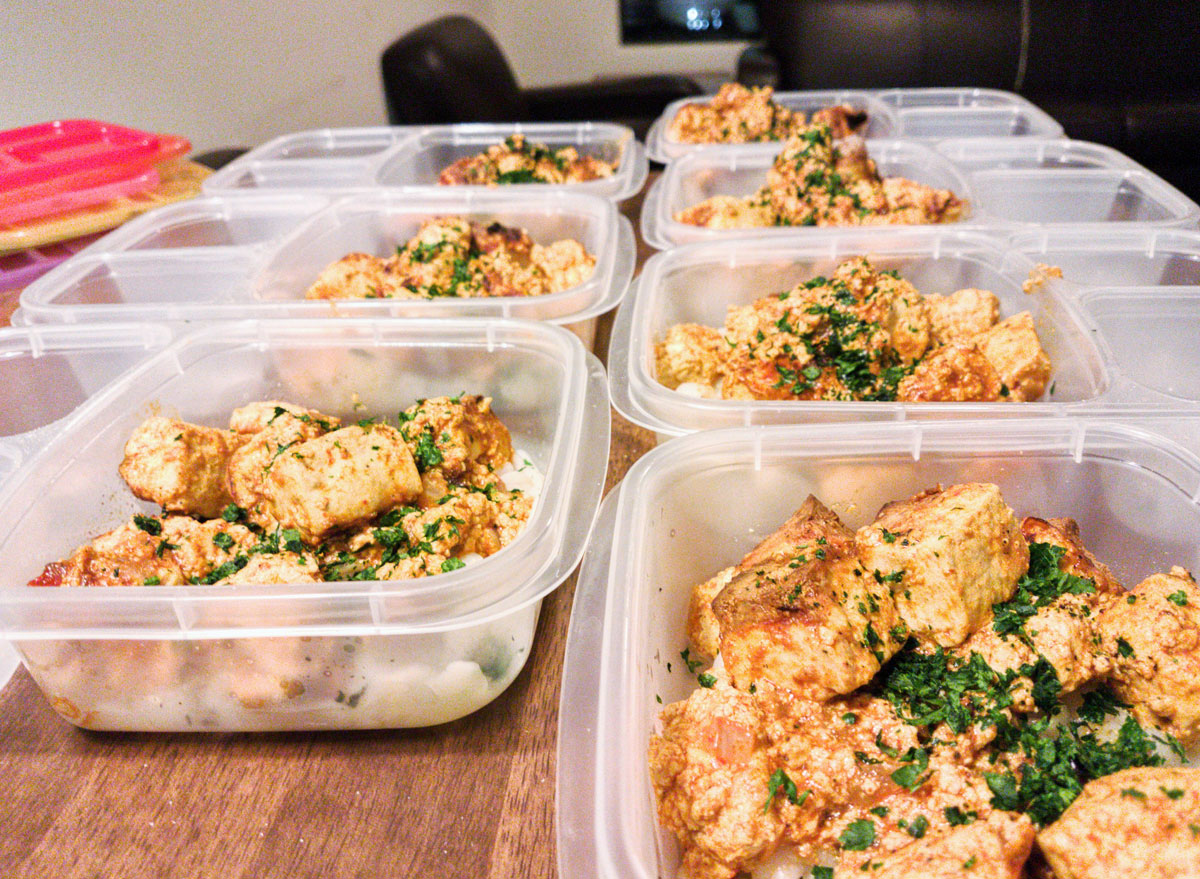
The term “bro diet” comes from…who knows
While the origin of this diet’s name is unknown, it’s pretty obvious to an outside observer like me that this diet originated from “bro culture.” USA Today defines bro culture as a subculture that is known for escalating masculinity. It is a term usually associated with startup culture, workplace environments, fraternities, gyms, even the tech industry. And, apparently, in the kitchen as well.
“People call it the ‘bro diet’ because it’s very basic, but for me, it just works,” Sinko says. “It’s probably the easiest thing to do for meal prepping.” While my research can’t confirm if that’s the true reason behind the name, there’s one thing I do know: I’ll be calling my brother “very basic” from now on.
While the bro diet may seem “very basic” for the typical bro, it’s not just those stereotyped in bro culture who consistently eat a bro diet. In fact, it’s something that even females will contribute to as well. When I started to learn the specifics on foods allowed in a bro diet, I was actually shocked by how similar it sounded to my own diet when I started to work full time after graduation. I ate the same kinds of foods for my lunches, prepped enough portions to get me through my week, and doused my lunch in Sriracha when things got boring. So I guess you can call me “very basic,” too.
The bro diet is pretty restrictive
Similar to the If It Fits Your Macros (IIFYM) diet, the bro diet focuses on fulfilling your macro count to achieve your goals. But unlike the IIFYM diet, which encourages all sorts of food as long as “it fits your macros,” the bro diet is pretty restrictive. You focus on clean eating, single-source macronutrient foods that fit your goals.
“What this teaches us is if you can create a meal plan that’s very basic and stick to it every day, by removing a bunch of options and a bunch of choices—because too much choice can be overwhelming—then we can get into good habits and good routines,” says Paul Revelia, fitness coach and owner of Pro Physique Inc., in a YouTube video of his about the bro diet in 2017. “So yes, through this method, a cookie cutter or a ‘bro’ approach or a very whole food, clean approach, we learn good habits and patterns.”
This is true for someone like Ben Keating, an avid follower of the bro diet for over two years now. Not only has the bro diet helped him to gain 20 pounds in muscle since starting in 2017, but he is thoroughly content with the limiting foods required for this diet.
“I’m the pickiest eater of all time, so when I saw a diet that was limited to chicken, rice, and broccoli, I was sold” says Keating. “I prefer very bland foods because I’m too picky to eat anything else.”
Keating continues to prep out the same containers of food every week. He starts his mornings with eggs, then digs into two or three of his prepped containers every day—usually consumed between two or three hours. He eats 12 oz. of chicken breast, 1 cup of brown rice, and 1 cup of broccoli.
Meal prep is essential
I’ve always been a huge advocate for meal prepping. It makes cooking and eating healthier during the week that much easier. But for those on the bro diet, they take meal prep to the absolute extreme.
Remington James, a popular YouTube creator and fitness coach, posts videos of himself making a week’s worth of food in just a few hours time—and it is utterly hypnotizing to watch them. By the end of his videos, his table is covered with containers full of meals for the entire week. Typically it’s a breakfast, lunch, another lunch, and dinner.
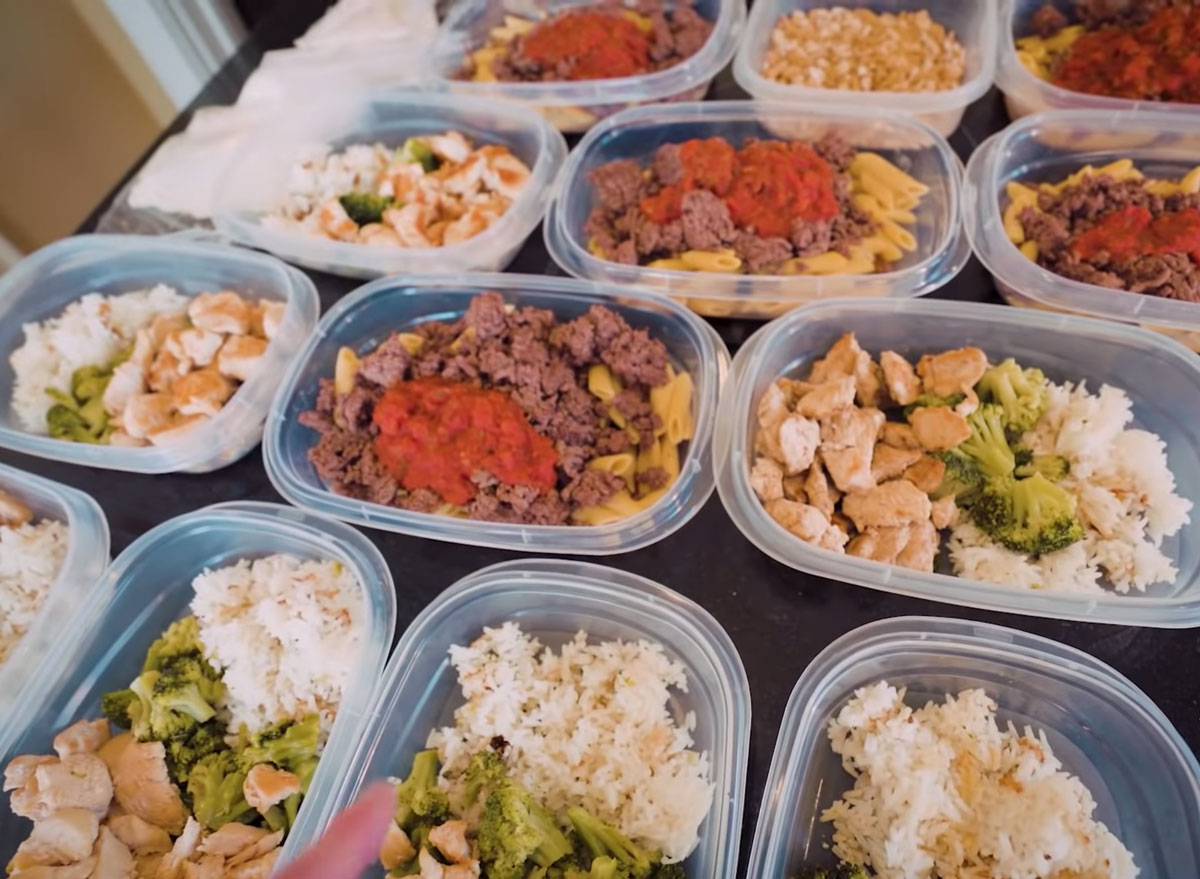
To keep the food tasting fresh later in the week, Remington recommends refrigerating the first two days of food and freezing the rest. Once you hit day two, you put the meals for day three into the fridge to defrost overnight.
“A big thing with the bro diet is measuring, consistently measuring how much rice, how much chicken, because you’re just trying to get your macro goals,” says Sinko. Remington James shows the exact science of this while putting together his meal prep videos, measuring out every single morsel of food down to the gram before putting it all in his containers.
But for those who don’t like meal prepping, surprisingly enough, there’s a meal box that will work for this diet.
If you don’t like meal prepping or cooking, there’s Eat Clean Bro. While this meal box company that does not claim to be a “bro diet” company, their meals certainly work for someone following the diet. It’s a great alternative to someone looking to eat healthier.
“Although our company strives to give our customers the healthiest meals and to provide our customers with the ability to eat clean, we are able to help with people who are trying to achieve specific goals with this type of diet,” says Jenn Golding, Executive Assistant to the President at Eat Clean Bro. Their Basics meals, as well as their bulk menu, can help with these dietary needs.
The bro diet is a staple for fitness gurus and college students alike
While the bro diet is closely associated with macro goals and bodybuilding, what’s particularly interesting is how this diet has created a culture of food and cooking for students—like my brother—who have no idea what they’re doing in the kitchen.
Remington James not only teaches his followers how to meal prep foods and what to cook, but he’s showing everyone how to cook and measure everything, what tools to use, and even breaks down to how cheap it all costs. It’s the perfect content for a poor college athlete like Sinko trying to eat healthy, work between his tight budget, demanding classes, and tiring lacrosse practices.
Plus, having a culture of men (and women) learning how to cook and prep clean foods is completely opposite of the stereotypical “Freshman 15” that looms over every college student’s first year in school. Because of these habits, my brother graduated this spring weighing the same exact weight as he did coming into school.
Now I’m not saying that the bro diet is the best diet out there, because I’m personally a fan of flexible dieting and intuitive eating. However, for an 18-year-old guy who wants to avoid that Freshman 15, following this kind of model can be helpful for someone who’s trying to develop healthy habits toward their health and nutrition.
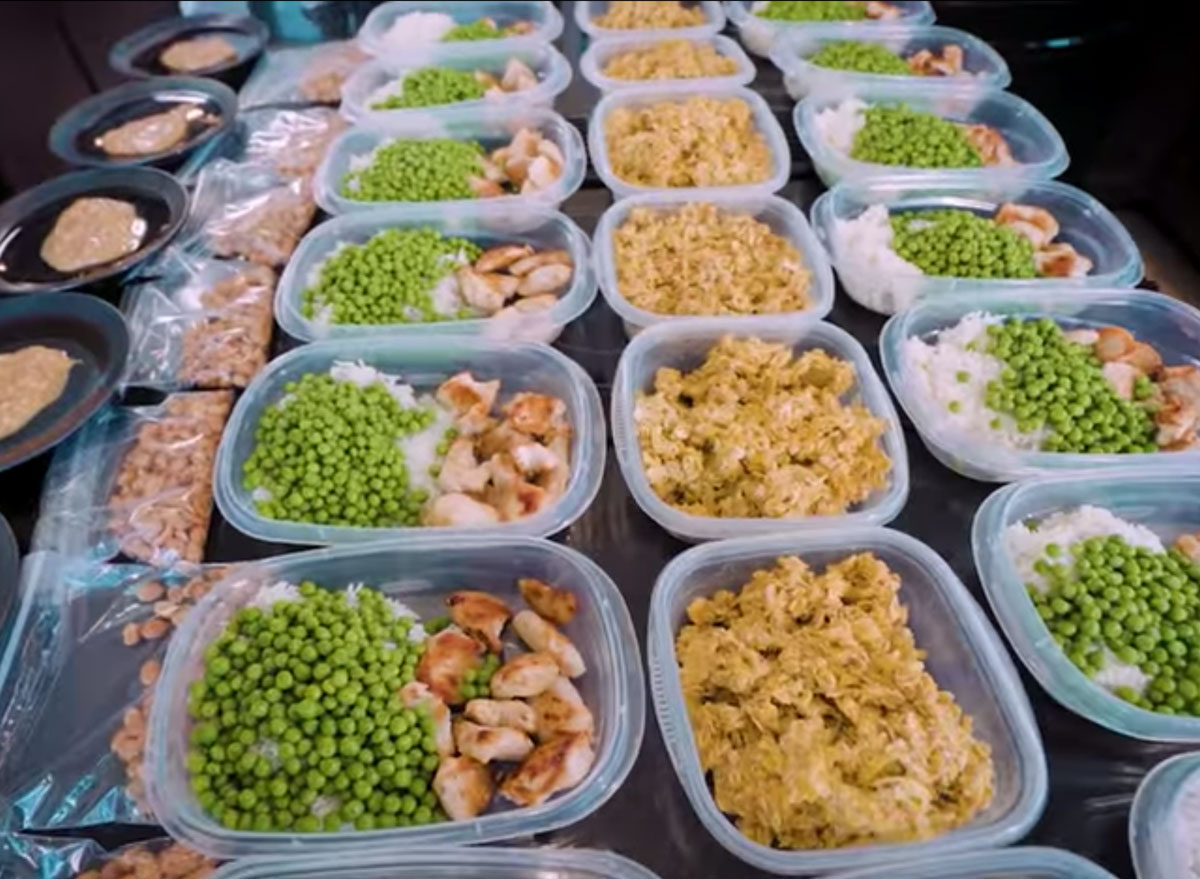
What does a nutritionist have to say?
Andy Arra, RD, LD and a CrossFit L2 Fitness & Nutrition Coach, says it plainly: “Following something this simple and ‘clean’ will immediately force people to shut out other non-nutritive dense foods.” Some people—like Keating—can thrive on a very black and white meal plan such as the bro diet, but others will have a hard time eliminating those other “non-healthful” foods like pizza or cake.
“That in itself should raise immediate flags for people, when an approach demonizes other foods or food groups,” Arra says. “This overly simplistic approach lacks a variety of micronutrients and essential amino acids that can be beneficial to body fat loss and muscle synthesis, not to mention will result in burnout very quickly.”
While the bro diet is a well known cultural phenomenon, with many YouTube and fitness “experts” that back up this style of eating, it unfortunately does not make them an expert in it. Arra does admit that the bro diet is a “fine place to start” but “would never recommend a single source macronutrient diet, ever.” He admits that he would not consider this diet nutritionally sound, and would rather recommend for someone to get outside assistance and training if you want to hit specific goals.
“[The bro diet] is just another attempt to ‘hack’ or create an overly simplistic solution to a complex topic and subset of issues,” Arra says. “There is no silver bullet or fast-track to success. Everyone’s got to put in the work to unpack what the root cause of their issues are and fix broken systems that got them there in the first place.”
Flexibility may be the key to bro diet success
While the bro diet may help with consistency in a diet, meal planning, and even saving money, flexibility seems to be the key to success. For someone who strictly eats the same thing seven days a week, things can get boring. It’s for that reason that Sinko chooses to keep his weekends open, or why Keating has designated “cheat” days to eat other foods he loves. The bro diet is simply a way to stay on track for their lifting and weight goals, while also being a steady way to consistently cook for themselves and save money.
“Given some flexibility, people tend to be more consistent,” says Paul Revelia in an interview with Eat This, Not That! “What happens when you’re on the same seven or eight foods, once you’re off the diet, people tend to feel like they need to go way off the diet because they have to start back up tomorrow. So, [flexible dieting] is different in that instead of just being exclusive, meaning that you only get these seven or eight foods, a flexible diet is inclusive of basically anything that you can fit into your daily goals.”
Because the bro diet isn’t an established dieting model, factoring in flexibility—like Sinko and Keating both have—is something you are allowed to do. I mean, after all, there really isn’t a structure to this dieting model. Maybe it’s not “very basic” after all.
